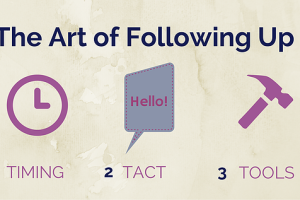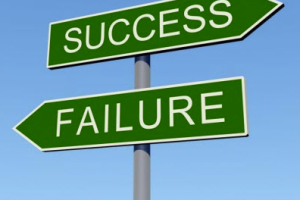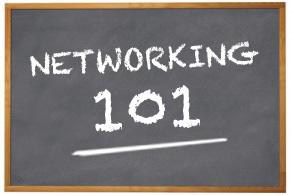The technical demo is an exciting phase of the sales process. Finally, you get a chance to create genuine value around your solution by demonstrating how your product works to the people who will actually use it on a daily basis. If you can generate excitement among prospective users, the internal momentum for change can tip a warm deal over the fence and into the negotiation phase.
But technical demos can also be tricky. A botched presentation may call your competence and ability to deliver on your promises into question. So in this post, we’ll look at a simple, three-step approach to technical demos that can help you avoid the most critical missteps.
- Get the facts.
A good technical demo begins with good preparation – and that means getting as much information on the front end as possible. At a minimum, you’ll want to consider the following:
- Venue. Will the demo take place at your office, or on-site with your buyer? There are advantages to both, of course. Having “home field advantage” means better access to technical resources and greater control over the actual demonstration environment – ensuring that the presentation goes off without a hitch. But if the environment is too foreign to your prospective buyer, it may leave them wondering whether they can emulate the results in their own setting. A successful demonstration on the buyer’s home turf however, may generate a stronger impression of native value, but you’ll face more unknown variables that could lead to snags at presentation time. As salespeople, we need to be ready to perform in any scenario, including virtual demo’s.
- Schedule. How much time do you ideally need to make an effective technical presentation? How much time is your buyer prepared to give you? Will the demo take place in the context of a normal work day for the participants, or will it occur after-hours? Early in the morning or late in the afternoon? These are all factors that might impact how you calibrate your presentation – which features you’ll demonstrate, which customizations you’ll want to port ahead of time, etc. – in order to make the best use of whatever time you have.
- Participants. Who will you be presenting to? What are their roles? Are they already experienced with solutions like yours – or will they need to be educated along the way? A technical demo for CMO will obviously look rather different than one for Business Analyst. And you might be asked to present to both groups at different times, so you’ll want to adjust your content and presentation style to suit the competencies and attention span of each.
- Technology. Which IT components will your buyer provide, and which will you provide yourself? Does the proposed venue include the minimum system requirements for your solution to perform well? What’s your backup plan for a bad Internet connection or spotty video conference feed? It’s better to address these things up front, because nothing derails a technical demo more quickly than “technical difficulties.”
- Study your audience.
Once the basic details are in place, you’ll want to tailor your presentation to suit your audience. Instead of delivering a canned talk that emphasizes the same features for all users, you’ll need to customize each demo according to several key factors:
- Your buyer’s business environment. How many employees does your buyer have? Does the team work on-site or remotely? Are most prospective users technically skilled, or is the team primarily comprised of non-technical users supported by a smaller administrative group? What sorts of things might offer competitive advantage to an organization in their business sector? These are the kinds of questions that can guide you as you decide how to position your solution’s value – particularly if it could evolve the organization’s workflows, reduce overhead, or introduce new revenue or information-gathering opportunities into extant business processes. Armed with these insights, you can structure your demo to help your prospect discover new business value as they engage with your solution.
- Users’ business priorities. Technical demos aren’t one-size-fits-all propositions. Not all of your solution’s features will matter to all parties, so it’s the salesperson’s job to understand which facets of the product will most directly impact the day-to-day life of the individuals sitting in the room during the demo. It’s also important to discern between which facets of your solution are actual business needsversus “nice to haves.” You want to major on how your solution meets users’ needs first – and let the other stuff push your product over the top. For instance, after demonstrating how easy it is for a remote sales team to input a new lead into the sales funnel using your solution, you can casually demonstrate how that newly inputted lead is automatically backed up to the cloud and available for viewing and updating remotely using your participant’s personal smartphone.
- Prevalence of competitive solutions. If your prospect is aware of – or actively using – a competitive solution, you’ll want to know how your product measures up against it. Chances are, if you’re still in the conversation, then the technical demo is your best opportunity to demonstrate why your solution is the best Find out what it is about your solution that makes it superior to competitors’ for your particular buyer’s needs– and demonstrate those features early and often during your presentation.
- Have a game plan.
A solid technical demo should feel natural and organic to the buyer – like a cross between a conversation and a presentation. But that doesn’t mean that salespeople can afford to just “wing it” on the day of the demo. Flexibility is great, but you want to show up with a plan. Here are a few tips:
- Simulate a “day in the life” of your buyer. Once you know who your users are and what features most directly impact their daily work activities, you can create “sandbox” environments that emulate what their existing work routines might be like using your solution. Create some true-to-life scenarios that match your buyer’s business environment and offer opportunities for your solution to shine through as a superior alternative to the company’s existing tools and processes.
- Make the presentation interactive. No one wants to sit through a two-hour talk, so find ways to make the demonstration a two-way conversation that incorporates audience feedback and gives hands-on opportunities for users to interact with your product. Periodically pause for questions and learn how to “read the room” for signs of concern. Remember, it’s not a good sign when people remain silent during your presentation; it may indicate disinterest – or objections that may surface later on in the sales process. Making your presentation interactive allows these potential objections to arise organically so that you can address them forthrightly.
- Have technical experts at hand. No matter how good you might be with your solution, chances are there will be at least one or two highly technical questions or objections that you won’t be prepared to answer. That’s why it’s a good idea to have high-level technical expertise available during a technical demo. Perhaps one of your engineers is willing to accompany you for the demo to be on-hand for assisting users – or at least on call for video conference during the time you’ll be presenting. If not, never be afraid to tell truth; simply say, “I’m not sure about that, but I have a partner who would be eager to help us out. Could we schedule a call this afternoon?”
- Go for the “technical win,” not the final sale. Remember that the technical demo is part of the sales process, but not the endgame. A successful technical demo is measured by how well it answers the question, “Does this solution bestaddress our needs right now?” If the answer is yes, then there’s plenty of room at the negotiating phase to work out the details of price, implementation schedule, etc. But if the answer is “no,” or “not sure,” well… the deal is as good as dead. So plan accordingly.









Speak Your Mind